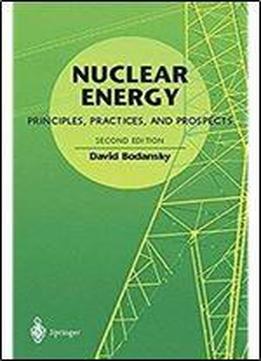
Nuclear Energy: Principles, Practices, And Prospects
by David Bodansky /
2008 / English / PDF
6 MB Download
This second edition represents an extensive revision of the ?rst edition, - though the motivation for the book and the intended audiences, as described inthepreviouspreface,remainthesame. Theoveralllengthhasbeenincreased substantially, with revised or expanded discussions of a number of topics, - cluding Yucca Mountain repository plans, new reactor designs, health e?ects of radiation, costs of electricity, and dangers from terrorism and weapons p- liferation. The overall status of nuclear power has changed rather little over the past eight years. Nuclear reactor construction remains at a very low ebb in much of the world, with the exception of Asia, while nuclear powers share of the electricity supply continues to be about 75% in France and 20% in the United States. However,therearesignsofaheightenedtinconsideringpossible nuclear growth. In the late 1990s, the U. S. Department of Energy began new programs to stimulate research and planning for future reactors, and many candidate designs are now contendingat least on paperto be the next generation leaders. Outside the United States, the commercial development ofthePebbleBedModularReactorisbeingpursuedinSouthAfrica,aFrench- German consortium has won an order from Finlandfor the long-plannedEPR (European Pressurized Water Reactor), and new reactors have been built or planned in Asia. In an unanticipated positive development for nuclear energy, the capacity factor of U. S. reactors has increased dramatically in recent years, and most operating reactors now appear headed for 20-year license renewals.











